The document discusses the evolution and challenges of Massive Open Online Courses (MOOCs) since their inception, highlighting issues such as lack of community, limited personal learning experiences, and high dropout rates. It explores how artificial intelligence (AI) could enhance MOOC engagement through personalized learning, improved community-building, and better support for instructors and students. However, it raises critical concerns about privacy and data security in the pursuit of more effective online learning experiences.
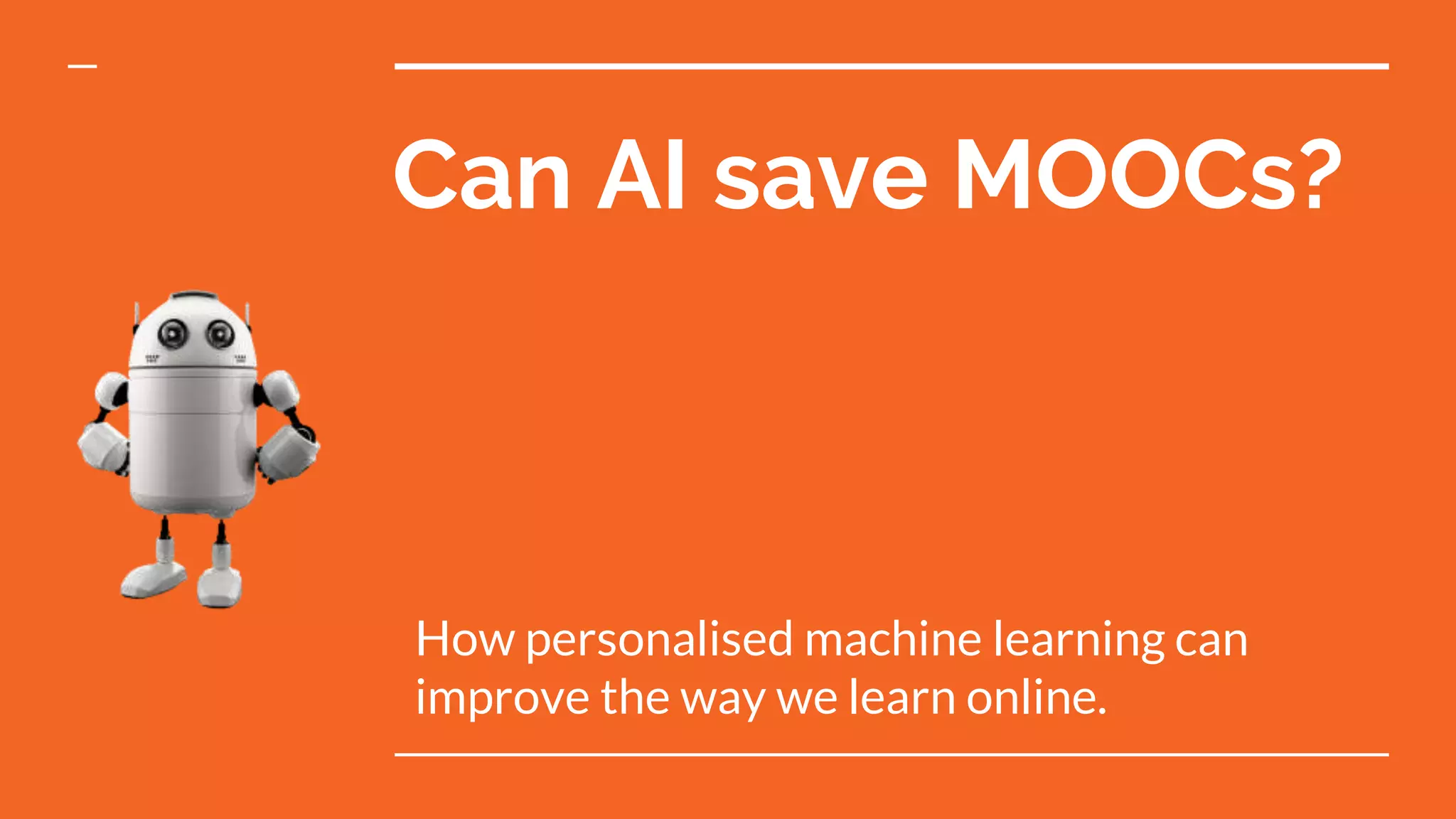
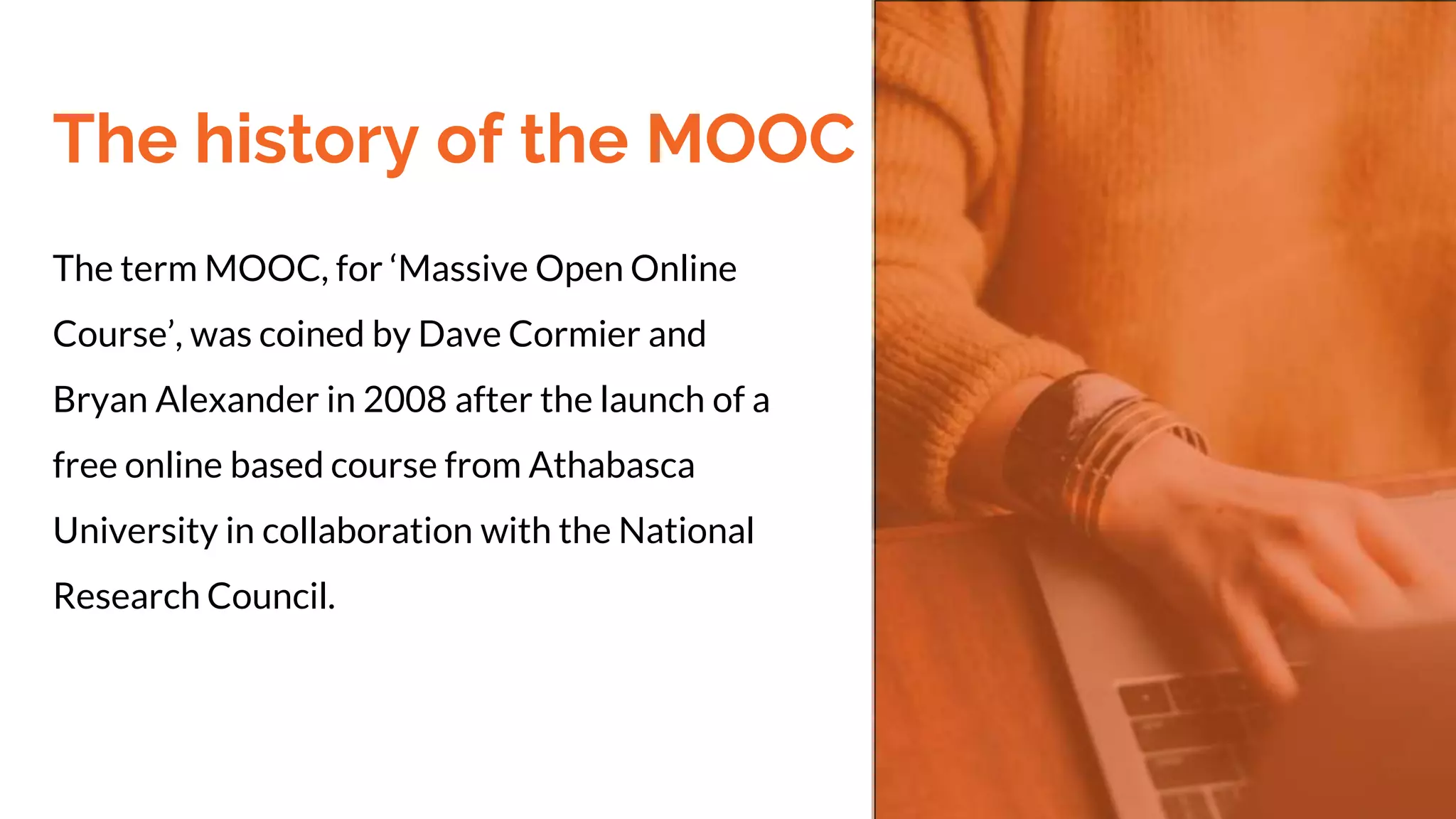
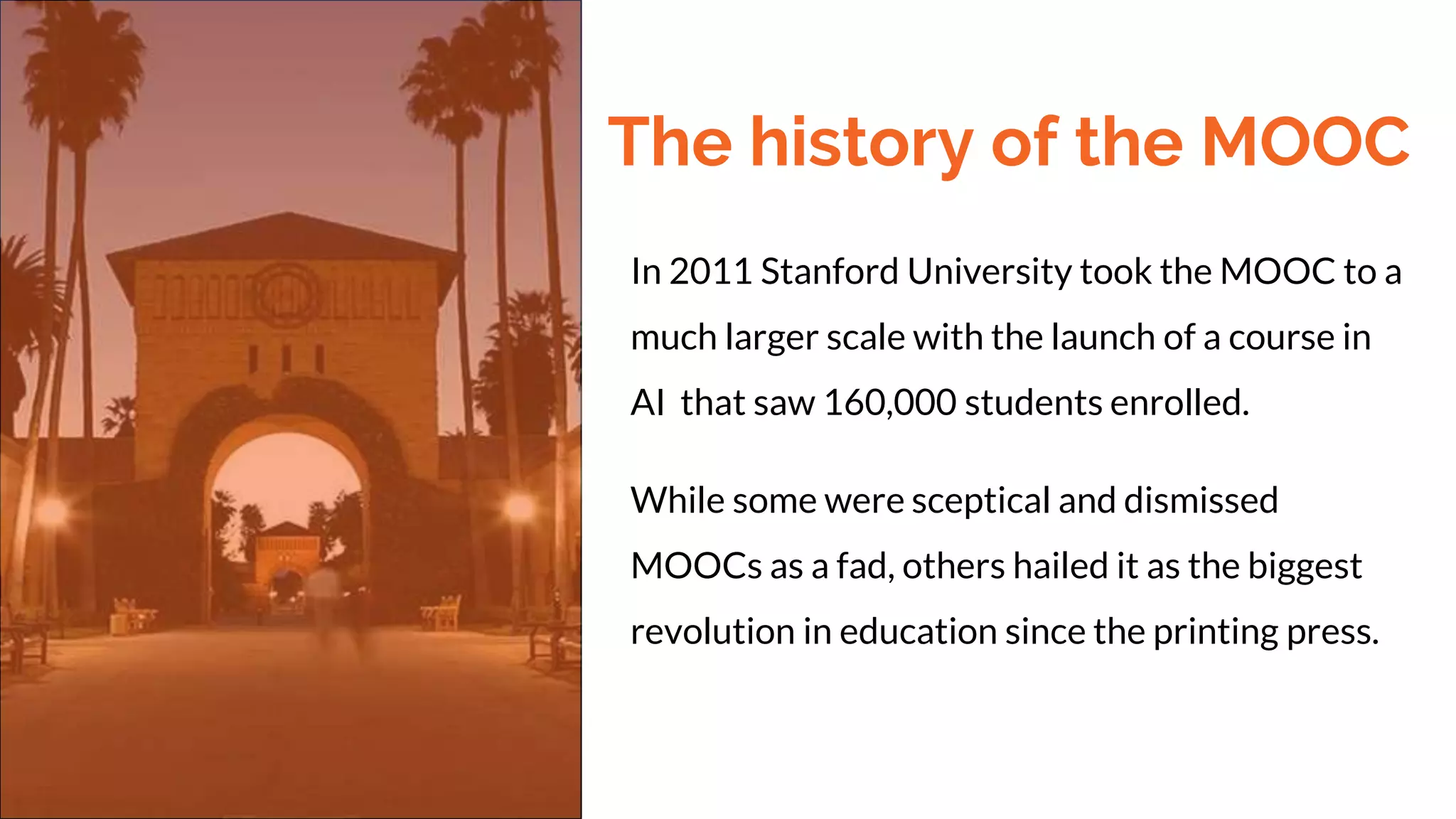

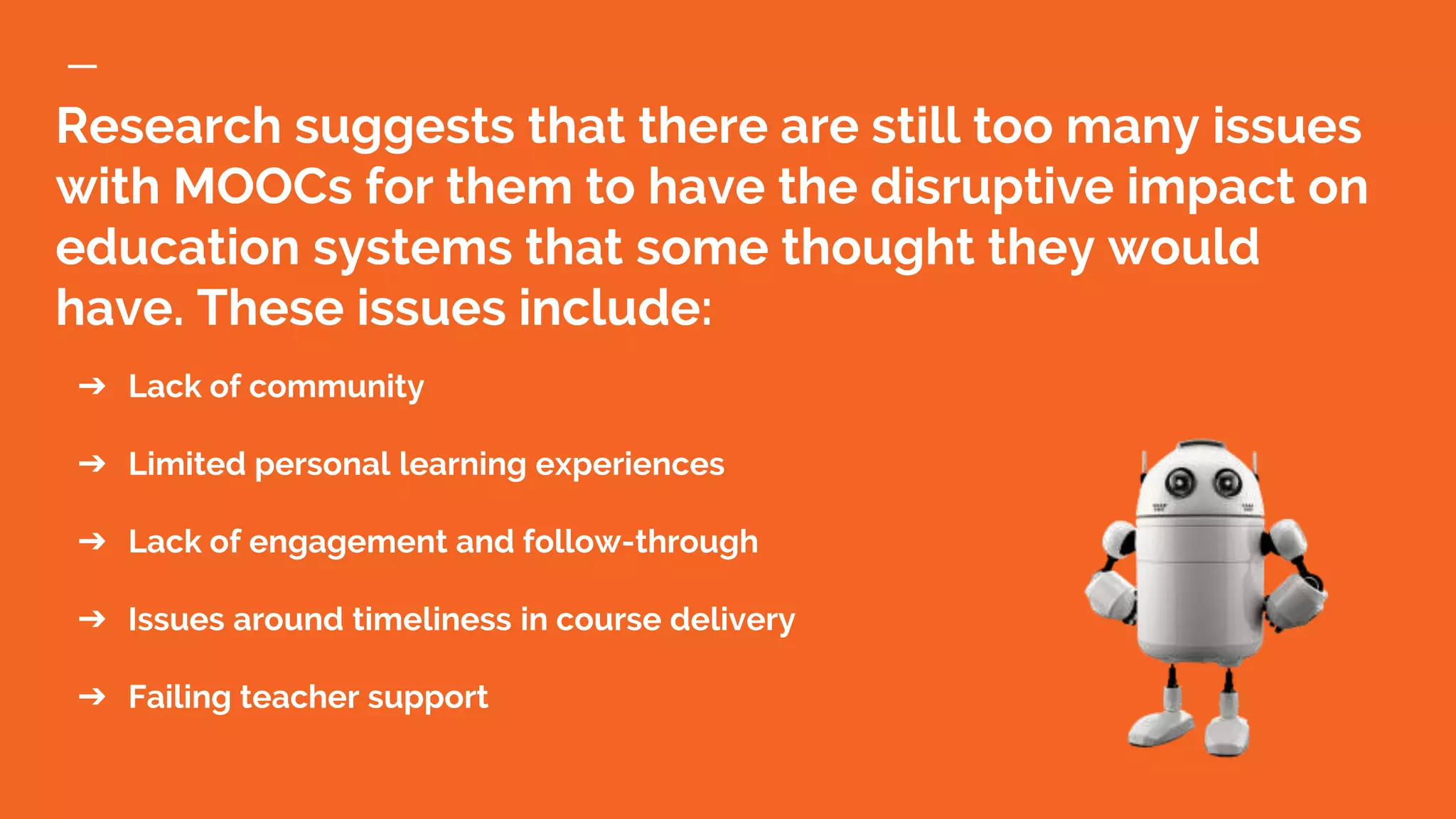


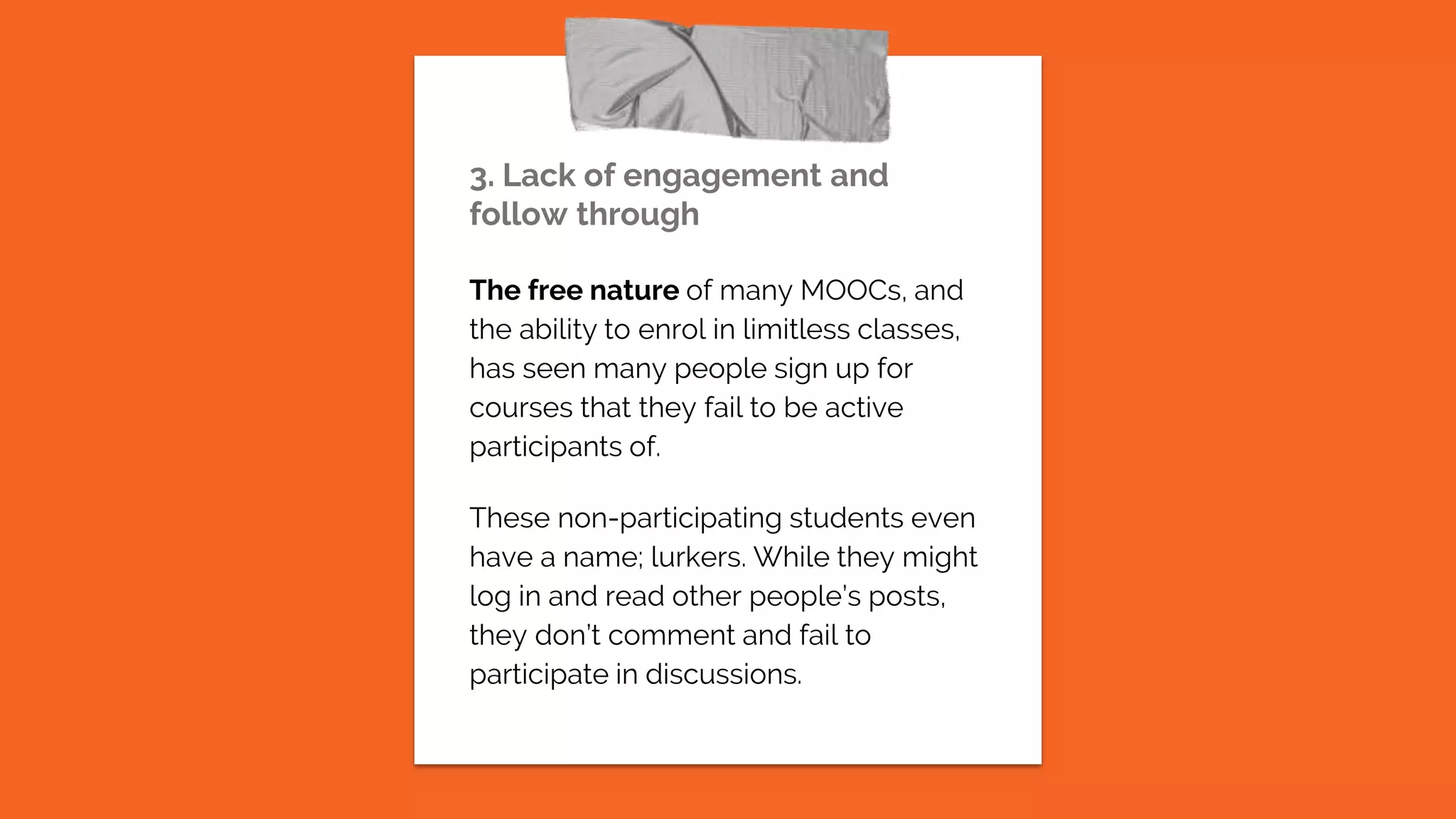
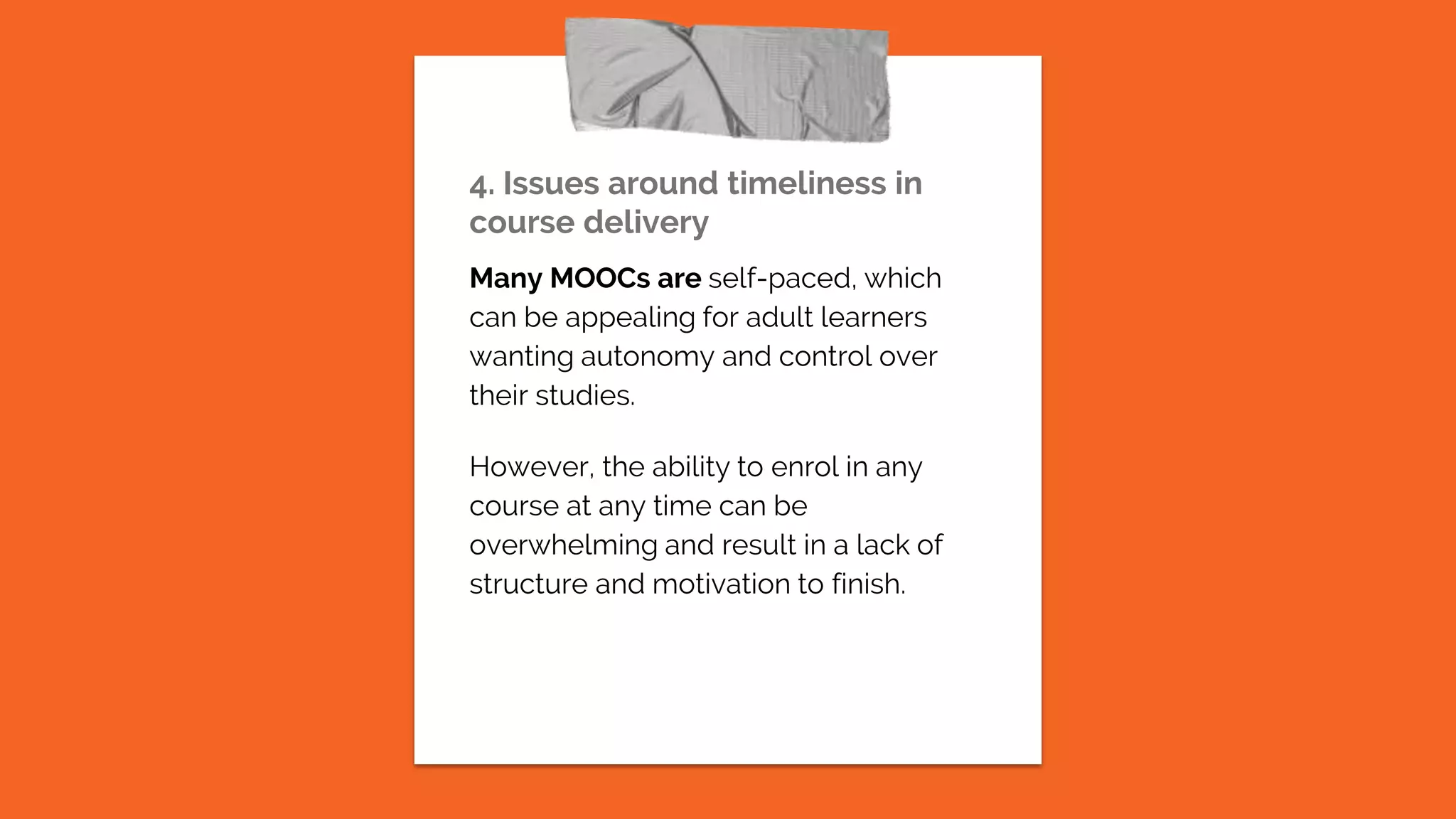
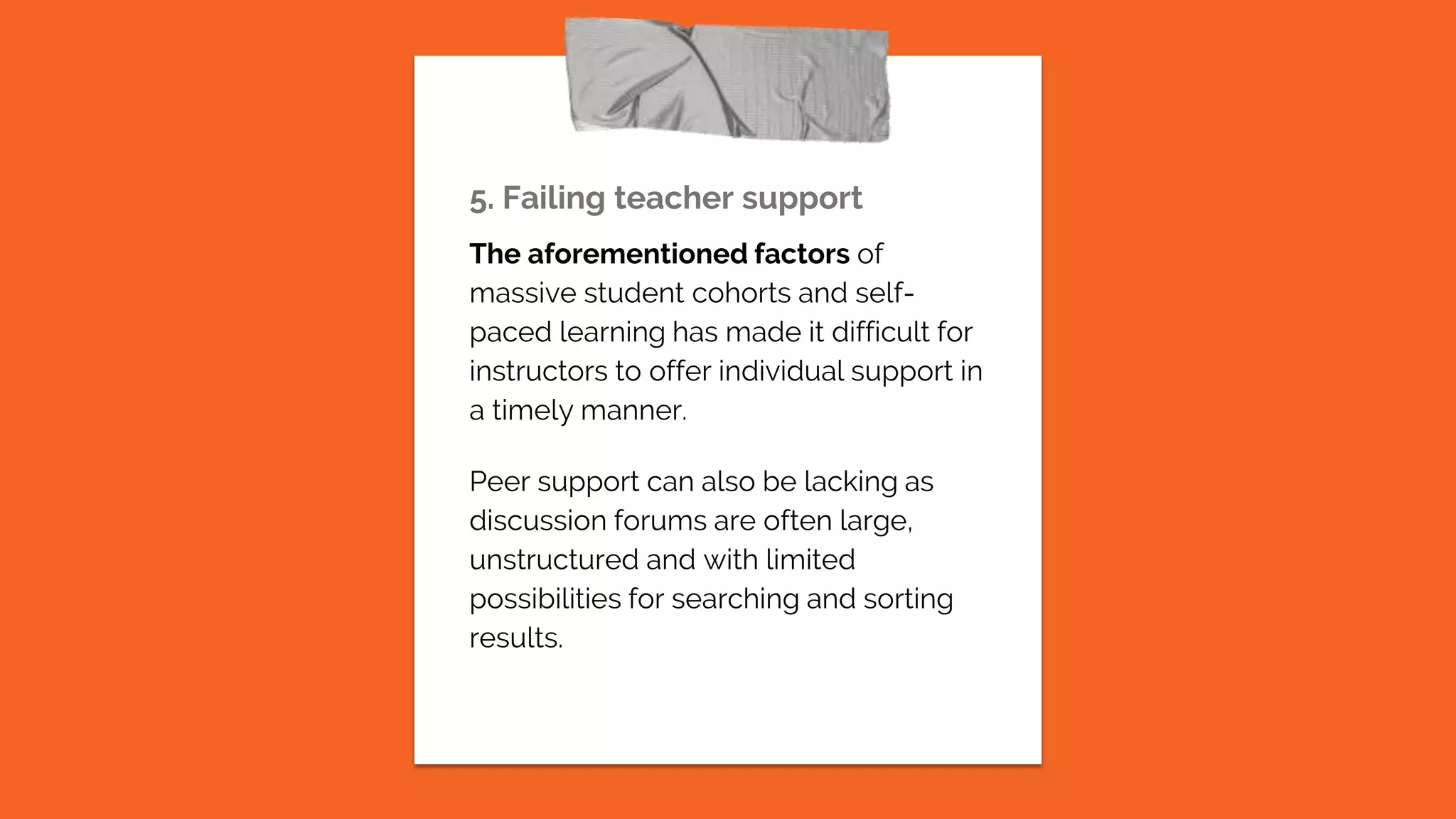
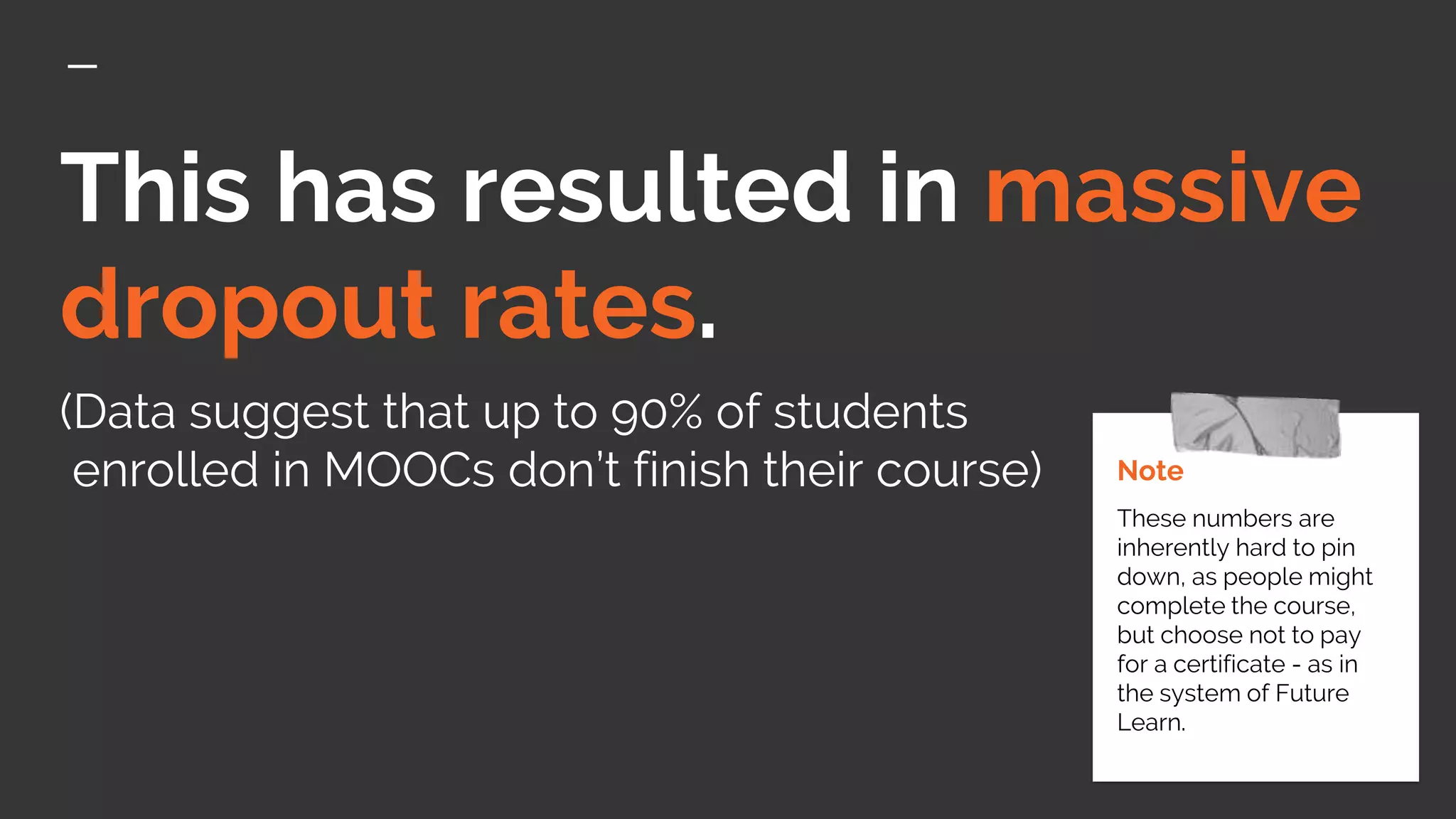

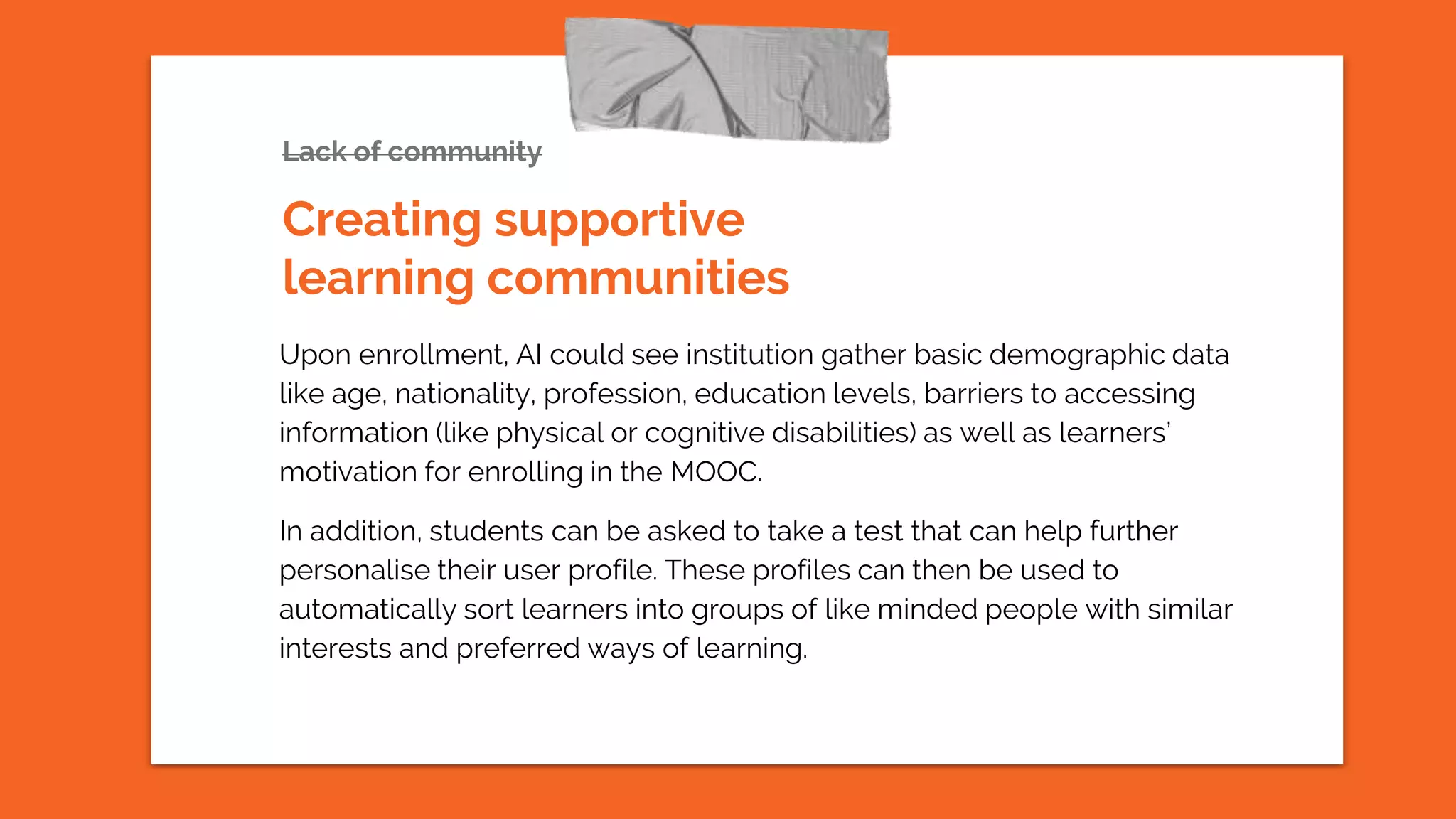

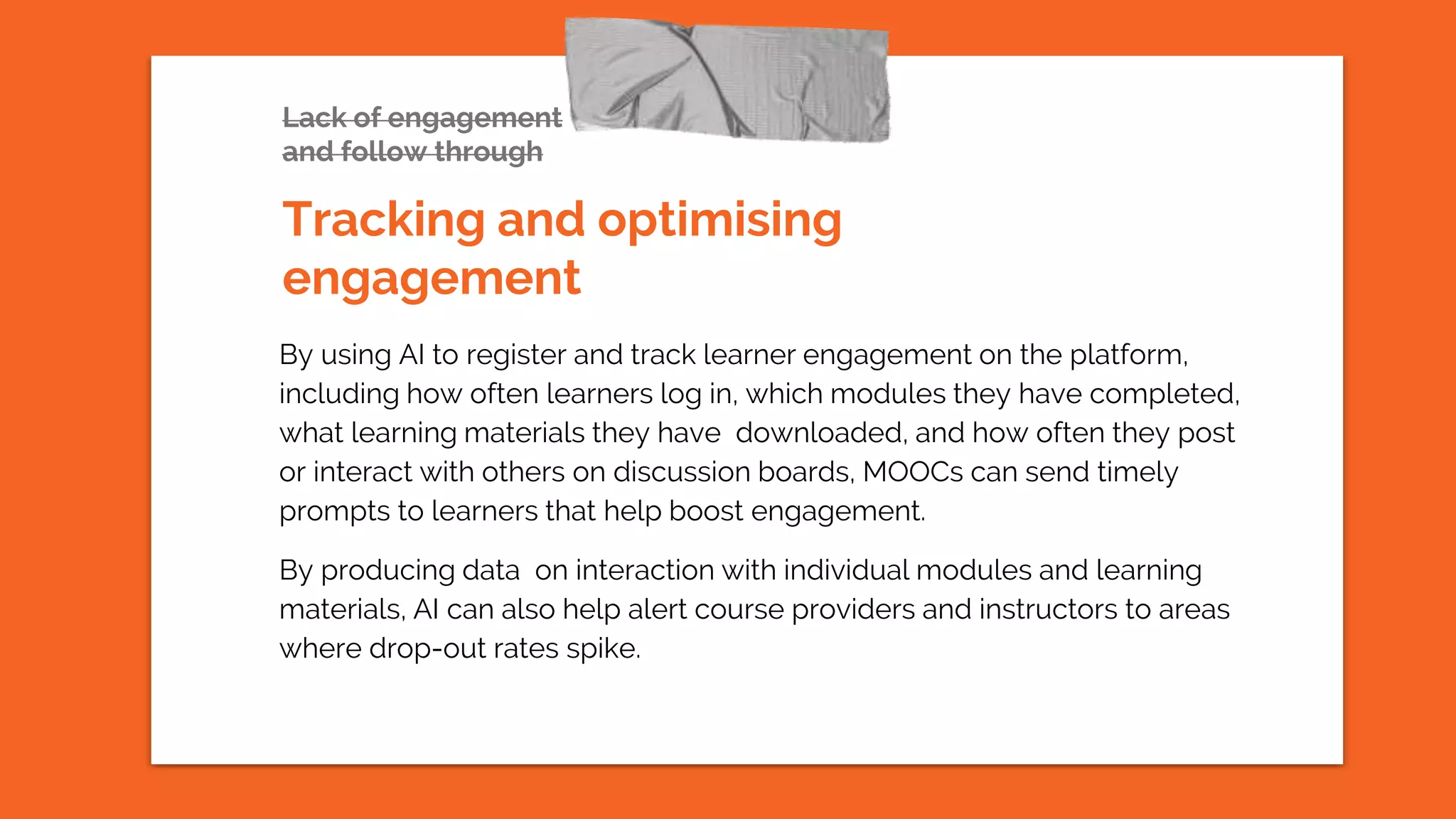



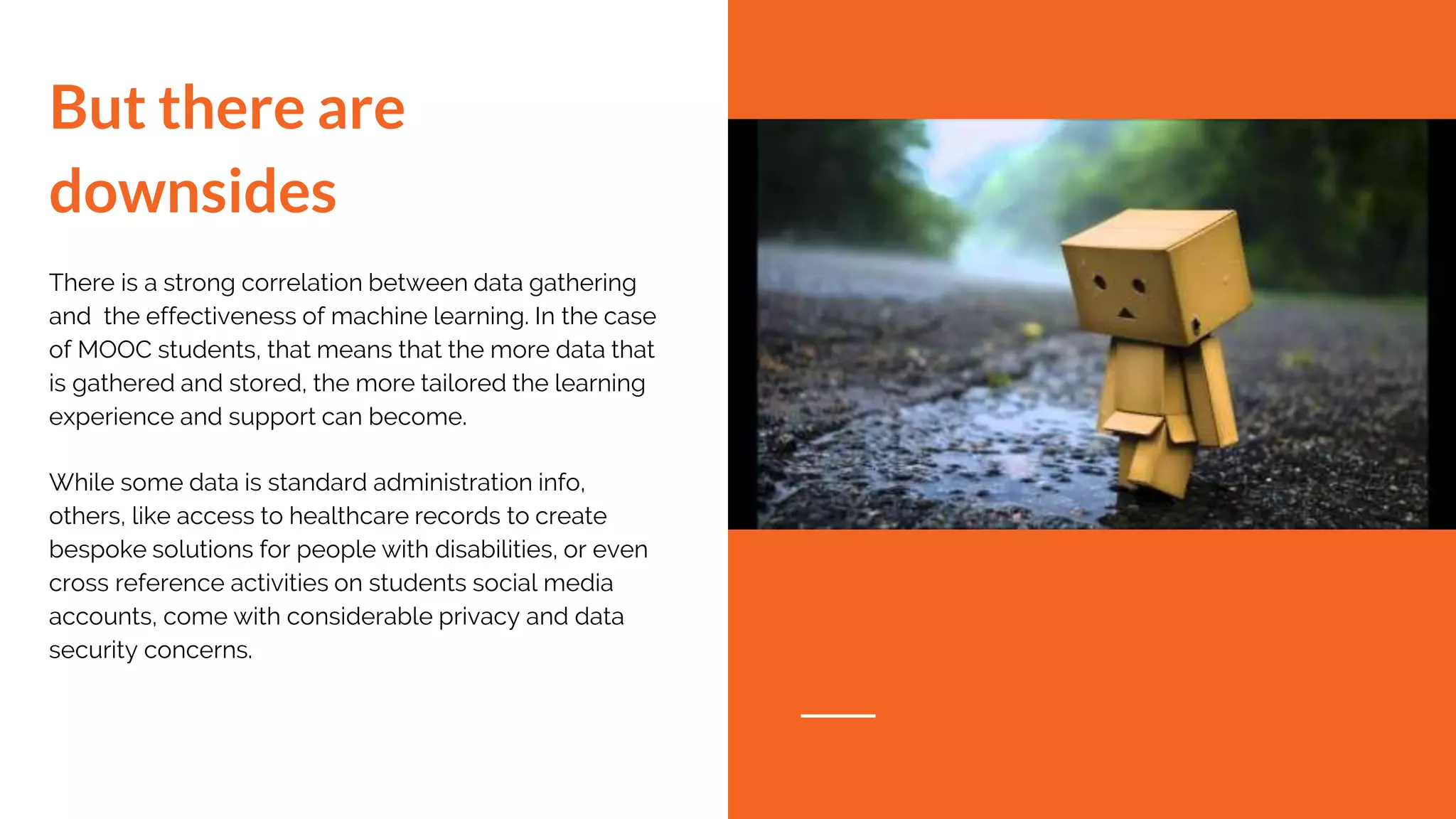

![Texts and videos that inspired this presentation
Alexander, B. (2019), 5 AIs in search of a campus. Retrieved from
https://er.educause.edu/articles/2019/10/5-ais-in-search-of-a-campus
Department for Education (2014). MOOCs: Opportunities for their use in compulsory-age education.
Retrieved from
https://assets.publishing.service.gov.uk/government/uploads/system/uploads/attachment_data/file/315591/DfE_RR355_-
_Opportunities_for_MOOCs_in_schools_FINAL.pdf
Kellermann. D. [Microsoft]. (2019, July 18). Demo: Teams in the Classroom at Microsoft
Inspire 2019 [YouTube]. Retrieved from https://www.youtube.com/watch?time_continue=34&v=NcbQ2UK69Tc&feature=emb_logo
Knowles, M. S., Holton, E. F., & Swanson, R.A. (2015). The adult learner: the definitive classic in adult
education and human resource development [ProQuest Ebook Central] (8th ed.). Retrieved from
https://ebookcentral.proquest.com/lib/qut/detail.action?docID=1883897
Laaser, W. (2015) “The rise and fall of the ‘Massively Open Online Courses’”, South Eastern European
Journal of Public Health (SEEJPH). doi: 10.4119/seejph-1804 .
O'Donnell, E., Lawless, S., Sharp, M. & Wade, V. (2015). A Review of Personalised E-Learning: Towards Supporting Learner Diversity.
International Journal of Distance Education Technologies, pp. 22-47. Retrieved from
https://www.scss.tcd.ie/seamus.lawless/papers/IJDET-2015.pdf ‘
Rivard, R. (2013) Measuring the MOOC Dropout Rate. Retrieved from
https://www.insidehighered.com/news/2013/03/08/researchers-explore-who-taking-moocs-and-why-so-many-drop-out](https://image.slidesharecdn.com/canaisavemoocs-200107053739/75/Can-AI-save-MOOCs-21-2048.jpg)